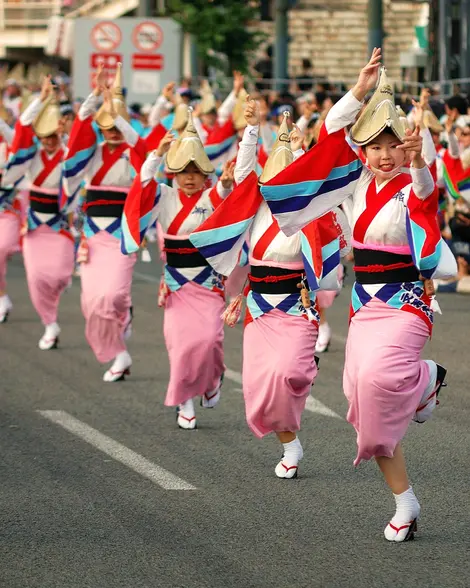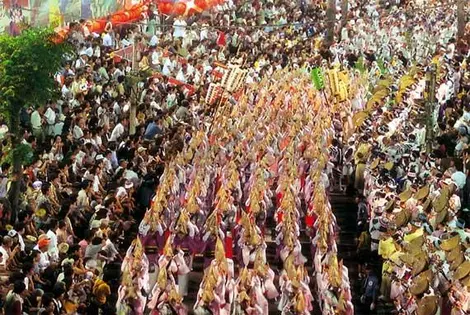Awa Odori, the dancing queens 阿波踊り
The fools' dance
The Awa Odori , or dance of Awa, is danced on the festival of the dead, Obon. It is one of the most common and appreciated traditional dances in Japan.
"Crazy people dance, crazy people watch, if you're going to be crazy, you might as well dance !"
A local celebration
The above quote comes from the words of the one that has become the quintessential Japanese traditional dance. A jig that dates back to the 16th century (at least), when the Lord of Tokushima distributed large quantities of alcohol to celebrate the completion of his castle.
The Awa Oodori was once frowned upon by the authorities, too popular, too vulgar. It was forbidden to samurai. Today, it is classified as an intangible heritage of humanity by UNESCO and holds its main festival in Tokushima , on Shikoku Island between August 12-15, for the Obon festival .
A national traditional dance
We now find the ren , the groups of dancers, in all the cities of Japan and even, in May 2015 in Paris for a special edition. All major matsuri (festivals) in Japanese cities invite Awa dancers to perform. It is however in Tokushima that the spectacle of several thousand dancers is the most impressive. The Festival then attracted nearly 500,000 visitors to this small provincial town.
Dance of the fools
Awa's dance sometimes seems improvised, with seemingly free gestures, like those of a madman. They are in fact extremely choreographed and rehearsed with rigor throughout the year. The women are particularly elegant in their brightly colored kimonos, which differ according to the teams, and their amigasa straw hats. They take small steps with graceful gestures, arms highlighting their line and sing "Hayaccha yaccha", which has no meaning but leads the dancers. The words of the dance usually don't make sense.
The men, dressed in short jackets and scarves masking part of the face, surround them and perform much more expansive mad dances. The children accompany them in their actions. These children can do pretty much whatever they want, accentuating the apparent chaos of the dance. Musicians accompany them, carrying drums, flutes, shamisen (Japanese lute) and other instruments.
Day and night
If you observe these dances during the day, you will only get a glimpse of Awa's dance: it is the nagashi version. When night falls, this is where the dancers will go wild, dancing the zomeki version. The spectators are then encouraged to dance as well. The more crazies there are ...
Address, timetable & access
Address
Timetable
Get off the Shinkansen Line at Okayama to take a fast train to Takayama (Shikoku). From there, take a local train to Tokushima.Price
Possibility to reserve seats for 2 hours of show, between 800 and 2,100 yen depending on the chair.






















